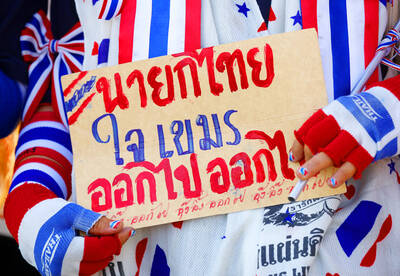A friend sent me a YouTube link to a video called “Insane Cycling — New York City.” I clicked on it, hoping to glean a few tips for my own cycling on the anarchic streets of China.
I came away feeling like someone who expects to see Mad Max and is shown Sesame Street instead. New York seemed like a wonderful place to ride: Pedestrians used the crosswalks, buses lumbered along like gentle whales, and taxis used their turn signals.
The streets looked so clean. No one honked.
If that’s insanity, what can be said of cycling in Guangzhou, the muggy, traffic-clogged city once known as Canton? It’s my constant dilemma — hit the road or stick to the treadmill at the gym? Cycling always wins. Not only is it more fun being outdoors but it’s a way of taking China’s pulse.
When the economy began stumbling last year, some of the earliest signs of trouble in the industrial southern city were seen on the roads.
On early morning rides, I noticed far fewer migrant workers pedaling to work in their yellow hard hats with shovels and toolboxes strapped to their rusty, squeaky black bikes. Many had been laid off and returned to the countryside.
Although officials were denying reports of a wave of factory closures, I was finishing my rides much faster because I didn’t have to weave through the pedaling multitudes. Assembly lines were shutting down and millions of migrant workers were going back to the countryside.
Those throngs are an iconic image for China, but it’s becoming outdated. Led by a swelling middle class, people in Guangzhou and other cities are ditching bikes for clean, new subway trains.
And cars.
Two years ago, Guangzhou proudly announced that the number of cars on its roads had reached 1 million. The metropolis of 10 million people has several auto factories, and aspires to be China’s Detroit. Last year, 180,000 new vehicles hit the city’s roads, the government said. That’s nearly 500 a day.
Cyclists feel themselves being pushed aside. A bike lane near my home is marked with a thick white line, a sign and a bike symbol painted on the pavement. But the line has been chopped up for parking spaces. It’s now a bike lane only when motorists aren’t using it.
Anyway, lanes may as well not exist — drivers seem to think their cars are protected by a force field. And it’s not just drivers who are a menace, but pedestrians and even other cyclists. I recently slammed into a migrant worker who blindly pedaled into an intersection. Neither of us was seriously injured, but I badly bruised my hip and wrist as I hit the road and bounced for a meter.
While leisure bikes are catching on among Chinese yuppies and college students, few take to the busy streets. Those who do wear helmets, as do I, but we’re a tiny subculture. The commuting laborers don’t wear helmets.
Many of the people behind the wheels of the shiny new cars just got their licenses, and their driving sometimes reminds me of my own in high school.
Some drivers are courteous to cyclists, perhaps remembering that they were among them not long ago. But others, especially the nouveau riches in their Audis and BMWs, show an obvious contempt.
They cut off cyclists and deny them the right of way. A honk is usually not a warning to be alert, but a “get out of my way” threat.
I encountered an extreme example during a training ride with a friend. It was 6:30am and we were hammering down an empty three-lane thoroughfare at 40kph when a black Volkswagen Passat behind us opened up with its horn. As it raced beside us we exchanged obscenities until the driver — a beefy man in the kind of crew cut that’s popular with police, military and the mob — swerved in front and nearly knocked us down.
Few people seem annoyed by Guangzhou’s cacophony of car horns. Sometimes drivers seem to be beeping just as a way of saying hello to the weird spandex-clad foreigner.
Perhaps the most hazardous obstacles are created by the midnight mystery dumpers. Their trucks bring construction waste — cement chunks, broken bricks, scraps of dry wall, splintered plywood — to unlit stretches of road and dump the loads where they can easily bring down any unwary biker.
Now that’s what I’d call insane cycling.

Eleven people, including a former minister, were arrested in Serbia on Friday over a train station disaster in which 16 people died. The concrete canopy of the newly renovated station in the northern city of Novi Sad collapsed on Nov. 1, 2024 in a disaster widely blamed on corruption and poor oversight. It sparked a wave of student-led protests and led to the resignation of then-Serbian prime minister Milos Vucevic and the fall of his government. The public prosecutor’s office in Novi Sad opened an investigation into the accident and deaths. In February, the public prosecutor’s office for organized crime opened another probe into

RISING RACISM: A Japanese group called on China to assure safety in the country, while the Chinese embassy in Tokyo urged action against a ‘surge in xenophobia’ A Japanese woman living in China was attacked and injured by a man in a subway station in Suzhou, China, Japanese media said, hours after two Chinese men were seriously injured in violence in Tokyo. The attacks on Thursday raised concern about xenophobic sentiment in China and Japan that have been blamed for assaults in both countries. It was the third attack involving Japanese living in China since last year. In the two previous cases in China, Chinese authorities have insisted they were isolated incidents. Japanese broadcaster NHK did not identify the woman injured in Suzhou by name, but, citing the Japanese

YELLOW SHIRTS: Many protesters were associated with pro-royalist groups that had previously supported the ouster of Paetongtarn’s father, Thaksin, in 2006 Protesters rallied on Saturday in the Thai capital to demand the resignation of court-suspended Thai Prime Minister Paetongtarn Shinawatra and in support of the armed forces following a violent border dispute with Cambodia that killed more than three dozen people and displaced more than 260,000. Gathered at Bangkok’s Victory Monument despite soaring temperatures, many sang patriotic songs and listened to speeches denouncing Paetongtarn and her father, former Thai prime minister Thaksin Shinawatra, and voiced their backing of the country’s army, which has always retained substantial power in the Southeast Asian country. Police said there were about 2,000 protesters by mid-afternoon, although

MOGAMI-CLASS FRIGATES: The deal is a ‘big step toward elevating national security cooperation with Australia, which is our special strategic partner,’ a Japanese official said Australia is to upgrade its navy with 11 Mogami-class frigates built by Japan’s Mitsubishi Heavy Industries, Australian Minister for Defence Richard Marles said yesterday. Billed as Japan’s biggest defense export deal since World War II, Australia is to pay US$6 billion over the next 10 years to acquire the fleet of stealth frigates. Australia is in the midst of a major military restructure, bolstering its navy with long-range firepower in an effort to deter China. It is striving to expand its fleet of major warships from 11 to 26 over the next decade. “This is clearly the biggest defense-industry agreement that has ever